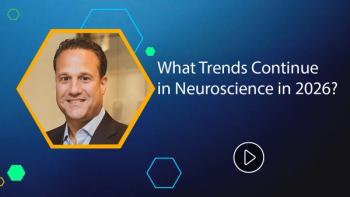
Tech Giants Collaborate and Disrupt in Life Sciences Industry
As tech giants, enter the life sciences industry, healthcare companies should adapt their business model and embark with these new players on a more ambitious, personalized, and preventive healthcare strategy.
As tech giants, enter the life sciences industry, healthcare companies should adapt their business model and embark with these new players on a more ambitious, personalized, and preventive healthcare strategy.
Life sciences companies are at a turning point: In an already challenging landscape, life sciences firms are now encountering the entry of tech companies, like Google, in their ecosystem. However, the example of Google’s foray into healthcare presents an argument and an opportunity for established pharmaceutical companies to adapt their business model and embark with tech players on a more ambitious, personalized, and preventive healthcare strategy.
Google’s advance into the life sciences market
A few years after the launch of
Although not yet commercialized, Google has developed the
Further support for Google’s ambition to shift the healthcare paradigm toward preventive health is the
An ever-changing pharmaceutical industry
At the same time as Google and other tech giants are entering the life sciences industry, traditional pharmaceutical companies are navigating through challenges affecting their business model. In the past, pharmaceutical companies relied on the “one-billion dollar blockbuster” model, focusing on large diseases, such as diabetes and heart diseases, ensuring long-term revenues that would cover the R&D spending. Over the past decade, they have been facing the end of the blockbuster paradigm: patent cliff coming along with increasing competition from generic and biosimilar drugs, heavy R&D investments with questionable ROI, and fewer unmet needs in major indications where numerous well-performing drugs already compete (e.g., hypertension, hypercholesterolemia). Physicians, patients, as well as payers, expect life sciences companies to bring new value to the healthcare system and to focus on patients’ individual needs. This evolution suggests that marginal improvement in clinical endpoints will no longer suffice for successful drug commercialization. According to Bertrand Talbotier, former Vice-President of French Marketing and member of Sanofi’s Management Committee, with 25 years of industry and consulting experience, founder of Iridium Health Alliance and Senior Expert for the United Nations Industrial Development Organization, “Most pharmaceutical companies are now looking at changing their business models, which is an extremely challenging exercise as the line between trying to maintain profits and investing in unknown territories is very tiny”. In such an environment, the pharmaceutical industry has reached a turning point: urged to change its business model to embrace a more personalized approach to medicine, it may also see competition emerging from a number of new players, among these Google.
Embracing digital giants to facilitate disruptive innovation
Although at a superficial glance, the arrival of tech entrants into the life sciences space could trigger competitive concerns for traditional pharmaceutical companies, a deeper look shows that collaboration with players from outside the life sciences field could lead to much needed disruptive innovation.
Tech giants such as Google could bring their expertise of collecting and processing massive amounts of health related data, making it possible to better understand diseases. This capability and the healthcare knowledge that could be extracted from it would help broaden pharmaceutical companies’ R&D horizon and illuminate the path for creating preventive and personalized medicine – which requires a deep understanding of patient characteristics.
From the payers’ perspective, earlier diagnosis, together with personalized therapies, could lead to lower healthcare costs. Partnering with tech companies, established life sciences companies with decades of experience in different therapeutic areas and healthcare systems could share the expertise of their scientific and commercial teams to develop and bring innovative therapies to the market. According to Bertrand Talbotier, “Pharma companies should be proactive in partnering with leading technological platforms and services providers that will transform the healthcare ecosystem. The risk-averse culture of pharma companies should not be an inhibitor. There are two possible options for the pharma industry:
1. Be at the heart of the revolution and remain in the driver’s seat through a massive strategic shift and full business model reshaping/reinventing,
2. Become a peripheral secondary player in the healthcare ecosystem and being enfeoffed to technological suzerains through a passive attitude towards technological and digital revolution.
New strategic alliances should be developed with shared goals and the aim for the life sciences industry to change the existing business paradigm. Delivering new outcome-based products and services in the pharma 3.0 ecosystem will require combinations of competencies that no individual firm will possesses, and companies will need to bring an outside-in, open perspective via non-conventional approaches.”
Conclusion
The advancement of tech giants into the life sciences industry could pave the way for innovation and new partnerships between two industries, which at first glance appear to be fundamentally different. In this respect, some traditional large pharma companies have already envisioned the potential of Google expanding into the healthcare area: in July 2014, Swiss Novartis unveiled a
These examples confirm the mutual interest and vision that tech and pharmaceutical companies share. They also lend credence to the promising notion that tech and pharma companies can join forces to move towards a patient centric healthcare system that would benefit patients, providers, payers, and ultimately the entire healthcare system.
Anaïs Frappé is a Consultant at Simon-Kucher & Partners Life Sciences practice in New York.
Newsletter
Lead with insight with the Pharmaceutical Executive newsletter, featuring strategic analysis, leadership trends, and market intelligence for biopharma decision-makers.





